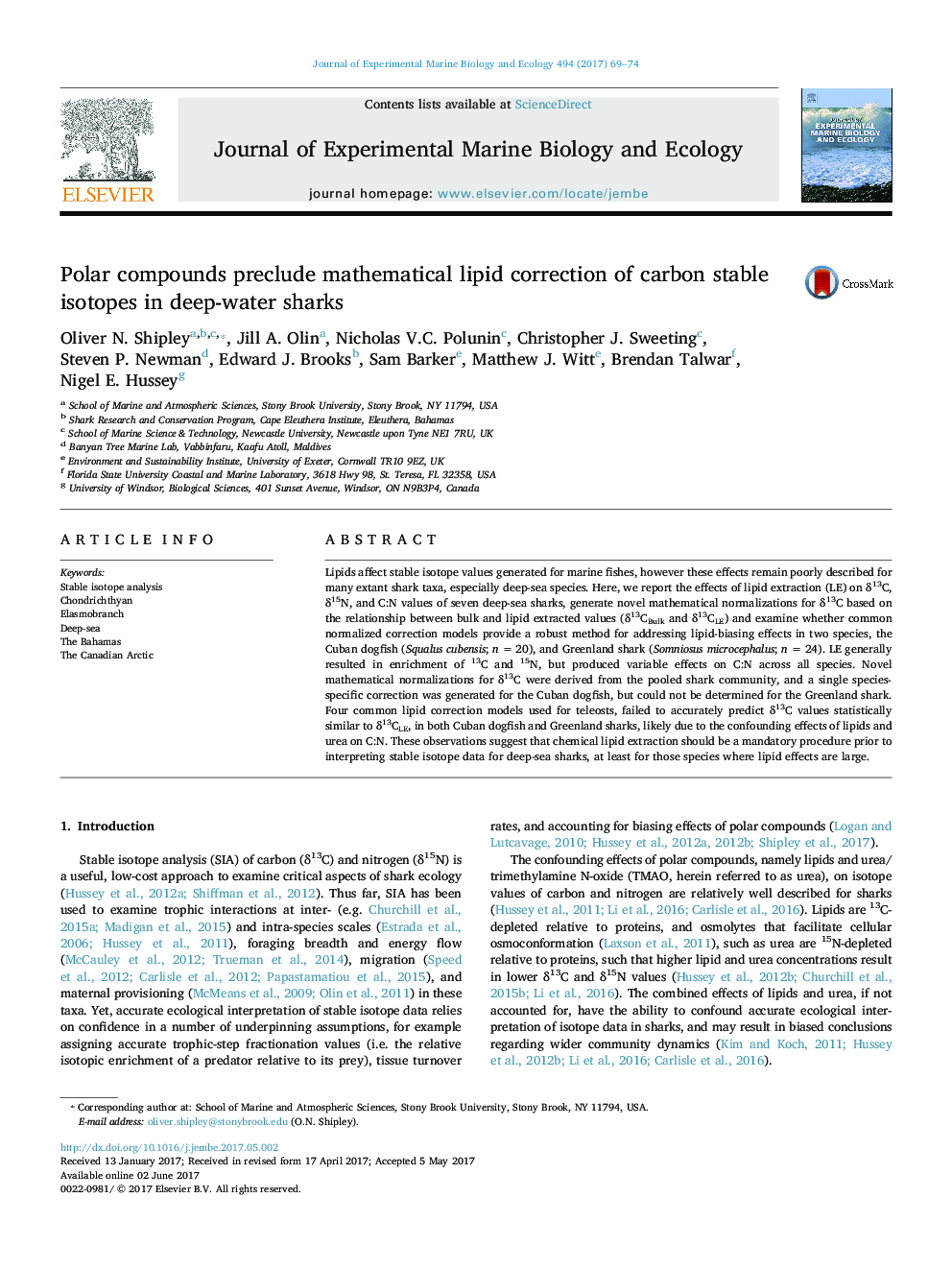| Article ID | Journal | Published Year | Pages | File Type |
|---|---|---|---|---|
| 5744481 | Journal of Experimental Marine Biology and Ecology | 2017 | 6 Pages |
â¢We examined polar compound effects on δ13C isotope values of deep-sea sharks.â¢Lipid extraction resulted in variable shifts in δ13C, δ15N, and C:N.â¢Lipid correction models based on C:N could not predict 'lipid-free' δ13C.â¢Chemical extraction is therefore necessary prior to ecological interpretation.
Lipids affect stable isotope values generated for marine fishes, however these effects remain poorly described for many extant shark taxa, especially deep-sea species. Here, we report the effects of lipid extraction (LE) on δ13C, δ15N, and C:N values of seven deep-sea sharks, generate novel mathematical normalizations for δ13C based on the relationship between bulk and lipid extracted values (δ13CBulk and δ13CLE) and examine whether common normalized correction models provide a robust method for addressing lipid-biasing effects in two species, the Cuban dogfish (Squalus cubensis; n = 20), and Greenland shark (Somniosus microcephalus; n = 24). LE generally resulted in enrichment of 13C and 15N, but produced variable effects on C:N across all species. Novel mathematical normalizations for δ13C were derived from the pooled shark community, and a single species-specific correction was generated for the Cuban dogfish, but could not be determined for the Greenland shark. Four common lipid correction models used for teleosts, failed to accurately predict δ13C values statistically similar to δ13CLE, in both Cuban dogfish and Greenland sharks, likely due to the confounding effects of lipids and urea on C:N. These observations suggest that chemical lipid extraction should be a mandatory procedure prior to interpreting stable isotope data for deep-sea sharks, at least for those species where lipid effects are large.
